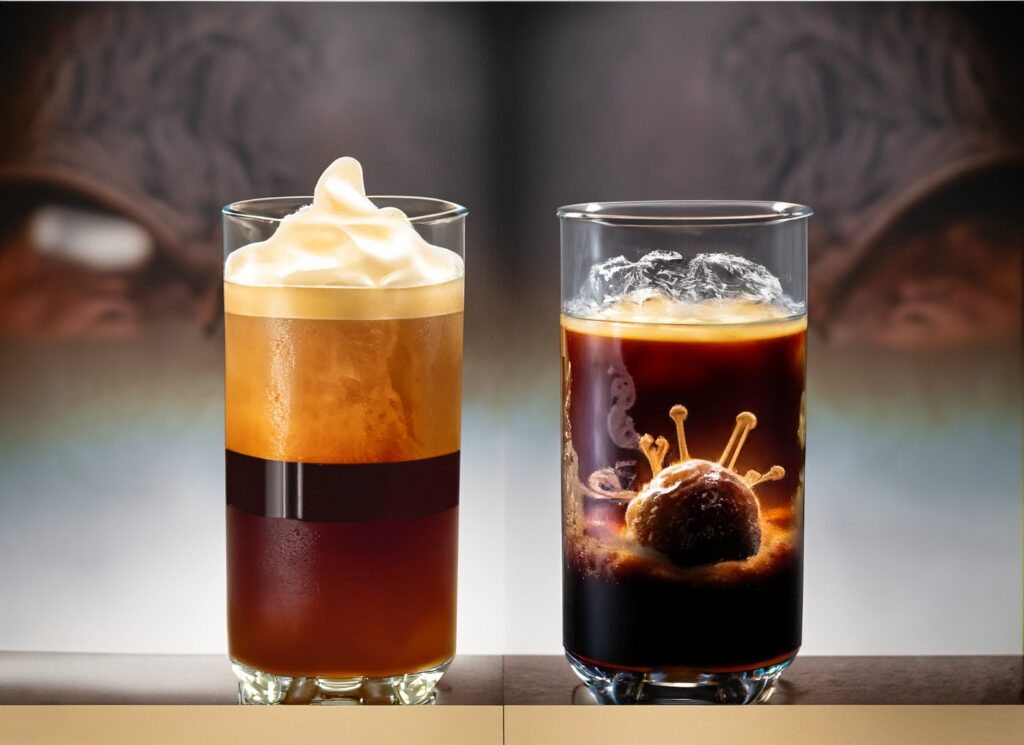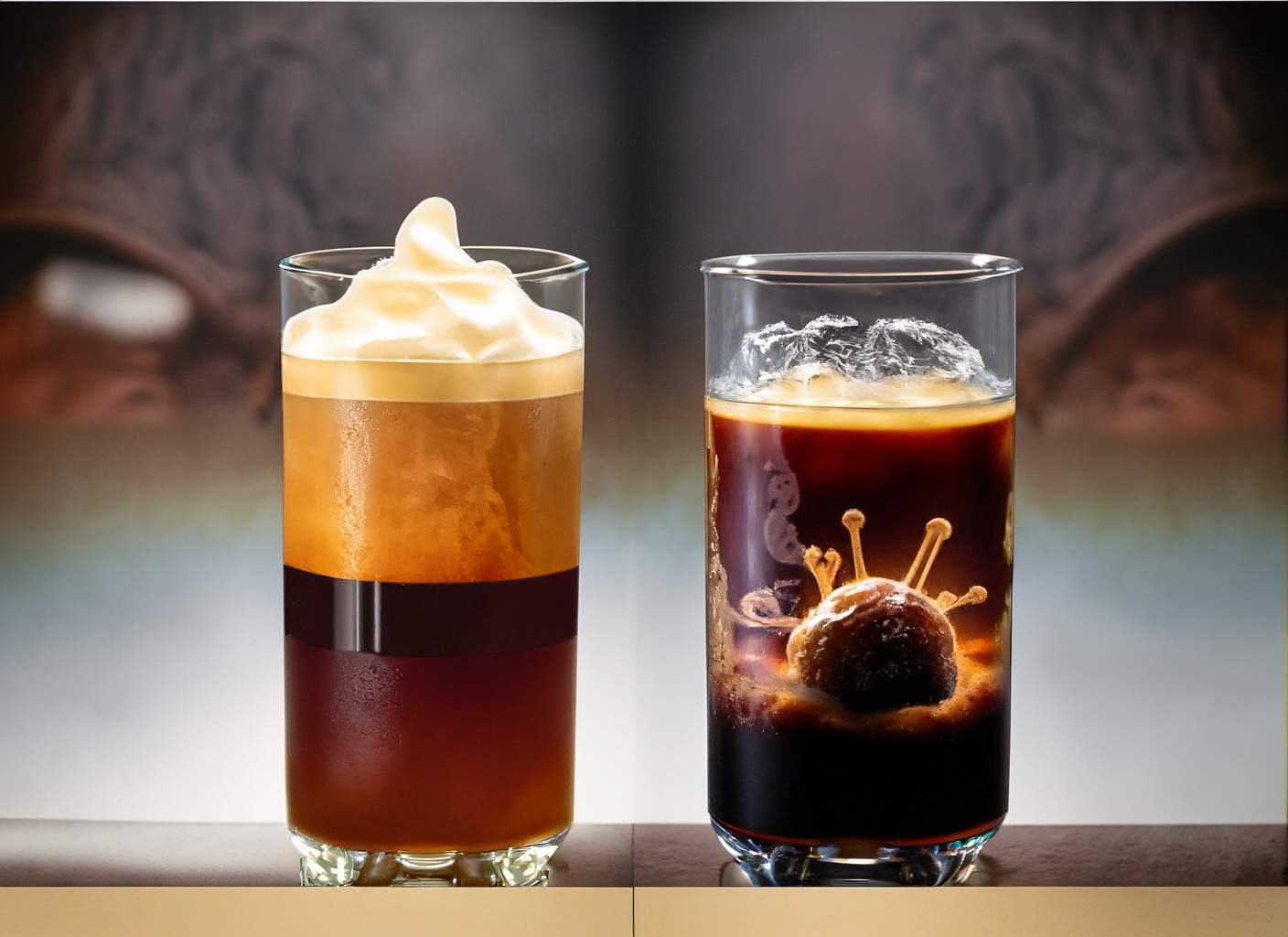
Espresso vs. Cold Brew: Unpacking the Caffeine Showdown
The daily caffeine ritual is a cornerstone for many, a morning pick-me-up, an afternoon boost, or simply a comforting ritual. But with the ever-expanding coffee landscape, navigating the caffeine content of different brews can be a challenge. Two popular contenders often spark debate: espresso and cold brew. The question frequently arises: which packs the bigger caffeine punch? This article will dissect the caffeine content of espresso and cold brew, exploring the factors that influence their potency and providing clarity to coffee lovers everywhere.
Understanding Espresso: The Concentrated Shot
Espresso, the foundation for lattes, cappuccinos, and macchiatos, is a coffee brewing method characterized by its concentration and intensity. It’s made by forcing hot water through finely-ground coffee beans under high pressure. This process results in a small, potent shot of coffee, typically served in a 1-2 ounce serving. The pressure extracts a rich, complex flavor profile, and importantly, a concentrated dose of caffeine.
The caffeine content in an espresso shot can vary depending on several factors, including the type of coffee bean, the roast level, and the brewing process. Generally, a single shot of espresso (around 1 ounce) contains approximately 63 milligrams of caffeine. However, this is just an average, and the actual amount can fluctuate.
Factors Affecting Espresso Caffeine Levels
- Bean Type: Arabica beans typically have less caffeine than Robusta beans. Espresso often uses a blend of beans.
- Roast Level: Darker roasts often have slightly less caffeine than lighter roasts, due to some caffeine breakdown during the roasting process. However, the perceived strength can be higher due to the flavor profile.
- Grind Size: The fineness of the grind affects the extraction rate. Finer grinds, typically used for espresso, allow for more thorough extraction.
- Extraction Time: The duration of the extraction process impacts the caffeine content. Longer extraction times can lead to higher caffeine levels.
Delving into Cold Brew: The Smooth Operator
Cold brew, unlike espresso, is brewed without heat. Coffee grounds are steeped in cold water for an extended period, typically 12 to 24 hours. This slow, cold extraction process produces a coffee concentrate that is then diluted with water or milk before consumption. The result is a smoother, less acidic coffee with a naturally sweet flavor profile. The brewing method, however, influences the caffeine content significantly.
The caffeine content of cold brew is often higher than that of espresso, per serving. This is primarily due to the longer steeping time and the typically higher coffee-to-water ratio used in the brewing process. A typical 8-ounce serving of cold brew can contain anywhere from 150 to 200 milligrams of caffeine, significantly more than a single shot of espresso.
Why Cold Brew Can Pack a Caffeine Wallop
- Long Steeping Time: The extended steeping allows for more caffeine extraction from the coffee grounds.
- High Coffee-to-Water Ratio: Cold brew often uses a higher concentration of coffee grounds compared to other brewing methods.
- Coarse Grind: While a coarser grind is used for cold brew, the long steeping time compensates for this, allowing for maximum caffeine extraction.
The Caffeine Comparison: Espresso vs. Cold Brew
So, which has more caffeine, espresso or cold brew? Generally, per serving, cold brew tends to win the caffeine contest. While a single shot of espresso provides a concentrated dose, the larger serving size of cold brew, coupled with the brewing method, usually results in a higher overall caffeine intake. However, it’s essential to consider the serving size. A double shot of espresso (2 ounces) would likely contain more caffeine than a small serving of cold brew.
Here’s a simplified comparison:
- Espresso (1 ounce): Approximately 63mg caffeine
- Cold Brew (8 ounces): Approximately 150-200mg caffeine (can vary)
The caffeine in espresso and cold brew can affect individuals differently. Some people are more sensitive to caffeine than others. Factors like body weight, metabolism, and individual tolerance play a role in how the body responds to caffeine. It is always recommended to monitor your caffeine intake and be mindful of your body’s reaction.
Beyond Caffeine: Other Considerations
While caffeine content is a primary concern, other factors influence the choice between espresso and cold brew. Flavor profiles, acidity, and the overall drinking experience are also important considerations.
Espresso offers a bold, intense flavor, often with a crema – a rich, flavorful foam. Cold brew, on the other hand, is known for its smoother, less acidic taste, making it appealing to those sensitive to coffee’s bitterness. Furthermore, the versatility of espresso allows for a wide range of coffee-based beverages, while cold brew is often enjoyed as is or with milk and sweetener.
For those seeking a quick caffeine boost, espresso might be the go-to choice. It provides a concentrated dose in a small serving. However, for a sustained energy lift throughout the day, cold brew’s higher caffeine content might be preferable. The ultimate choice depends on individual preference and desired effects.
The Impact of Serving Size
The serving size is a critical factor when comparing espresso and cold brew. A standard shot of espresso is relatively small, whereas cold brew is often served in larger quantities. Therefore, while espresso has a higher caffeine concentration per ounce, a larger serving of cold brew will often deliver a more significant caffeine hit. Think about a double espresso versus a tall cold brew – the latter is likely to contain more caffeine.
The Role of Coffee Beans
The type of coffee beans used in both espresso and cold brew also influences caffeine levels. Robusta beans generally contain more caffeine than Arabica beans. Many espresso blends use a combination of beans, while cold brew can utilize either. The specific blend and roast level can significantly impact the final caffeine content.
The Bottom Line: Which Has More Caffeine?
So, what has more caffeine, espresso or cold brew? The answer, generally speaking, is cold brew, particularly when comparing standard serving sizes. However, the caffeine content can vary depending on the brewing method, bean type, and serving size. It’s always best to be mindful of your caffeine intake and listen to your body’s response.
Ultimately, the best choice between espresso and cold brew depends on your individual preferences, desired caffeine level, and the type of coffee experience you are seeking. Both offer unique advantages, from the concentrated intensity of espresso to the smooth, refreshing nature of cold brew. Understanding the caffeine content and the brewing process will empower you to make an informed choice and fully enjoy your coffee ritual.
Conclusion
In the caffeine showdown between espresso and cold brew, cold brew generally emerges as the winner in terms of overall caffeine content, especially when considering standard serving sizes. The prolonged steeping process and often higher coffee-to-water ratio contribute to this result. However, individual preferences and serving sizes are key factors to consider. Espresso’s concentrated nature provides a quick boost, while cold brew offers a sustained release of energy. Both espresso and cold brew provide a valuable source of caffeine for coffee lovers everywhere. The key is understanding your own needs and preferences and enjoying the coffee experience.
For further reading, explore [See also: Benefits of Cold Brew Coffee] and [See also: Espresso Brewing Guide for Beginners].


